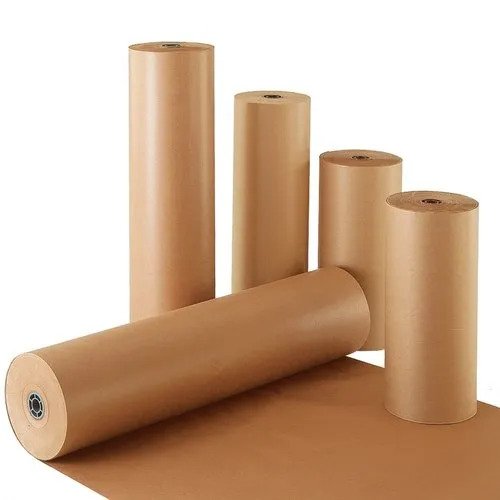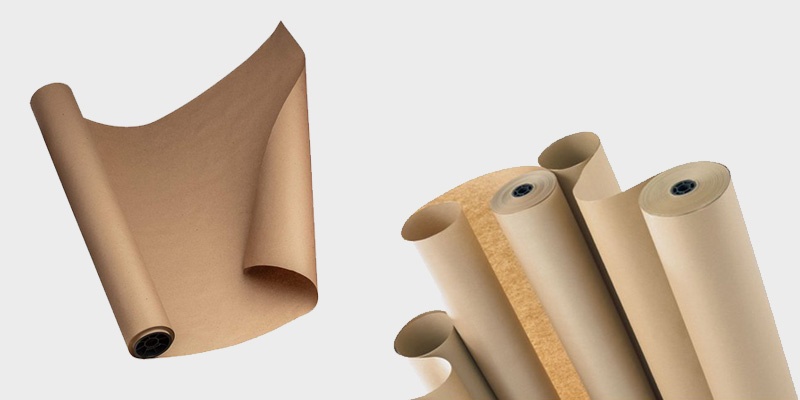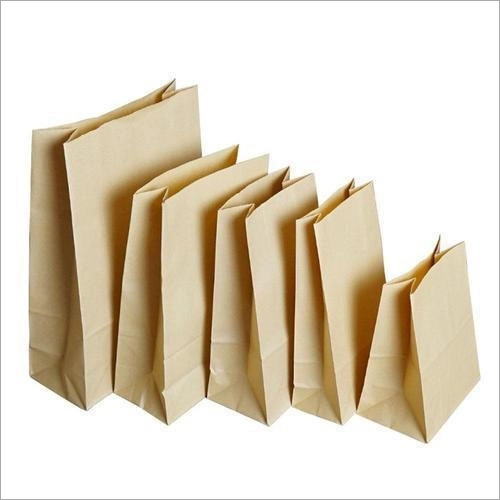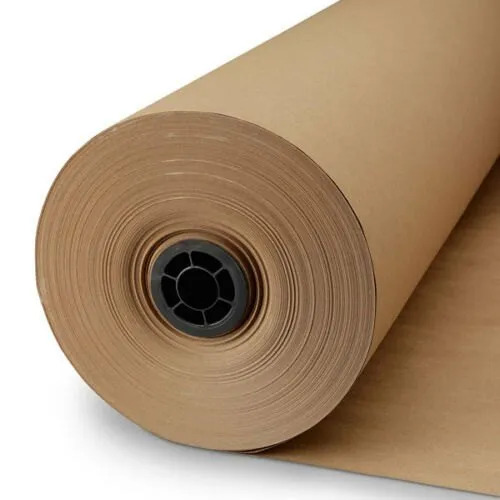What Exactly Is Kraft Paper? Unpacking the BF Question

Have you ever noticed the “BF” on your kraft paper packaging? You may have seen it listed when looking for kraft paper, but what exactly does it mean?
The BF in kraft paper stands for “basis weight”. This tells you how heavy the kraft paper is compared to regular printing paper. It is typically used to measure the quality of the kraft paper, as higher basis weights usually indicate thicker and stronger papers. To put it simply, a BF of 80/81 means that an A4 sheet of kraft paper (which typically weighs around 62g/m2) will weigh 80g/m2 instead.
Kraft paper is becoming increasingly popular for many reasons, not least because it's durable and robust, but it can be confusing or overwhelming to know what exactly you're looking for when shopping for it. In this article, we'll help unpack the BF question. We'll discuss what a BF range is, how to use it to choose quality kraft paper that suits your needs, as well as some of the other properties you should be aware of when selecting your perfect batch of kraft paper.
Overview of Kraft Paper
Kraft paper is a heavyweight, tear-resistant paper made from the strongest type of pulp. It has been treated with a solution to give it characteristics that make it suitable for certain uses. So what is the BF in Kraft Paper?
BF stands for "Bond Factor" and it indicates the relative strength of a paper compared to its weight. A higher BF means a stronger paper—in other words, kraft paper with a high BF is less likely to tear or split. The BF range for quality kraft paper falls between 18 and 32, with BW (Balsam Weight) being used to measure the strength of papers that weighs more than 40 pounds per ream.
Kraft Paper is also known for its resistance to tearing or splitting and its ability to hold heavy materials without breaking. It's also acid-free, so it won't yellow or fade over time like other types of paper can. Plus, its thickness makes it ideal for use in wrapping and packaging materials.
Understanding the BF Scale
When it comes to Kraft paper, you'll often hear of something called "BF." What does this mean? BF stands for "Bond Factor," and is used to describe the paper's strength relative to other types of paper. This is a measurement that denotes how a sheet of paper reacts when it is subjected to a standard interior tear test.
Essentially, the BF scale works like this: The higher the number, the stronger — and more tear-resistant —the Kraft paper is. A BF of 20 or less is considered to be lighter weight, while 30 and above is considered heavier grade material. Below are some common BFs that Kraft paper may have:
-
12 BF or lighter: Used for lightweight applications such as gift wrap, light crafts and labels
-
15 BF: Used for heavier applications such as envelopes or folders
-
20+ BF: Used for industrial or packaging applications where maximum strength and durability are required
Using BF to Determine Quality
Have you ever heard the term “BF” tossed around when people talk about kraft paper? Well, you’re not alone—a lot of people have no idea what it means.
But the good news is that it’s actually pretty simple: BF stands for “Basis Weight”, and is used to measure the thickness and density of kraft paper. This standardized system helps people determine the quality of the kraft paper they’re purchasing.
Generally speaking, a lower BF number means that a sheet of kraft paper is thinner, while a higher BF number indicates thicker, heavier-weight paper. The range for quality kraft paper usually falls between 24 - 32 BF.
Anything above that falls into the category of super-duty or heavy-duty stock.
By learning what BF stands for and how to interpret it, ordering quality kraft paper for whatever your project needs become much simpler!
What Are the Properties of Kraft Paper?
You might be wondering what sets Kraft paper apart from other types of paper—but the simple answer is that it has unique properties.
-
Weight and Thickness
Many Kraft papers are lightweight, but they also come in a range of thicknesses between 0.5 mm and 3mm. This makes them ideal for applications such as covering books, wrapping gifts, and making liners for boxes and envelopes.
-
Strength and Permanence
Kraft paper has an exceptionally high tear resistance, which is why it is so widely used as a packing material. It is also very resistant to water and grease, making it perfect for wrapping food items for storage or transportation. Plus, since Kraft paper does not easily break down into small particles, it's also widely used as a permanent packaging material.
-
BF Scale Range
Quality Kraft paper usually falls between 18 BF (Bond Factor) to 35 BF on the BF scale range — the higher the number given for BF on the scale range means better quality, enhanced strength, longer life-span of product protection, more puncture resistance and higher tear strength. As you can see, these qualities make Kraft paper a great choice for many uses in the home or commercial enterprises alike.
What Is the Best Kraft Paper for My Project?

When it comes to selecting the right kraft paper for your project, you want to consider two things: the BF (or Basis Weight) and the type of material. Basis weight is typically measured in pounds per 500 square feet, and it's important because it affects how much stuff the material can hold. A higher BF means heavier paper that's also stronger and thicker.
The right BF for your project will depend on what you're using the paper for. For instance, if you need something strong enough to carry heavier items, you'll want a higher BF—like 23 or 30. Anything lower than that might be too thin and flimsy for the job.
Generally speaking, a 20 BF is considered lightweight or “dress weight”; anything from 21-29BF is considered medium weight; and 30BF plus is considered heavyweight.
When it comes to materials, some of your best choices are brown kraft paper (made from unbleached wood pulp) and white kraft paper (made from bleached wood pulp). Varudi - Brown Kraft tends to be a bit thicker but doesn’t have as much writing surface as white Kraft does—it also looks less polished—but it gives your project a more rustic feel. White Kraft is often used for wrapping gifts and displaying items in stores thanks to its more polished look, but because it’s thinner it can tear easily so be careful with it!
How to Store and Care for Kraft Paper
When you come to store and care for kraft paper, it's important to know what kind of paper you're dealing with in the first place. You see, kraft paper comes in a variety of grades and thicknesses—different types of Kraft paper also require different levels of care.
One of the key ways to measure kraft paper durability is by its BF. BF stands for "Basis Weight," and it measures the weight per unit area of kraft paper in pounds. A higher BF means that the Kraft Paper is thicker and more durable.
-
High-quality range
High-quality kraft paper usually falls into a BF range between 17 and 33, meaning that the weight per unit area is between 17 and 33 pounds (lbs). This type of kraft paper is highly resistant to tearing even if stretched, so this type will likely be used for food items or other types of packaging you need to have a dependable seal.
-
Lower-quality range
Kraft Paper with a lower BF typically falls into the 18–25 range; this makes it slightly less durable than higher-BF types, but still suitable for food packaging or boxes since it's resistant to tearing but still has some flexibility.
So when storing your Kraft Paper, make sure you know what kind you have! High-BF papers may need more protection from heat or humidity than lower-BF papers do; because each type has slightly different properties and requires different care, it's important that you understand what type you're dealing with when storing and caring for your Kraft Paper!
Conclusion
In conclusion, Shree Varudi Kraft paper is a strong, durable, and versatile paper that is commonly used for packaging and industrial applications. Its BF range can vary from 24 BF to 120 BF depending on the quality, weight, and type of the paper. It is a cost-effective and environmentally friendly option for businesses and consumers alike.
Kraft paper is quickly becoming one of the most popular paper products in the market due to its numerous benefits and its range of possible uses. From industrial packaging to consumer products, Kraft paper is definitely here to stay. Be sure to explore the wide range of Kraft paper applications and find the right Kraft paper for your needs.
Article Last Update: 21 April 2023


.jpg)